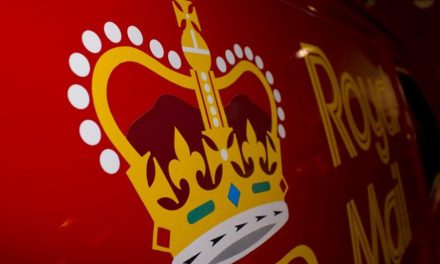
Royal Mail unveils details of GBP 1.2bn IT spend (UK)
Royal Mail has lifted the wraps on how it plans to spend up to GBP 1.2bn on IT-related projects over the next three to four years as it fights growing competition from rival delivery services.
Robin Dargue, the group’s Chief Information Officer and Technical Director, told Computer Weekly that a robust IT and logistics infrastructure will allow the company to develop new markets. “Adding IT content to products and services increases their value,” he says.
The crux of Royal Mail is its capacity to deliver the right item to the right person, Dargue says.
This is particularly so in addressing the opportunities offered by the burgeoning online retail sector, which is worth GBP 4.5bn and is set to grow to GBP 28bn by 2011, according to research firm IMRG.
Royal Mail is supplying up to 25,000 Intermec wireless handheld terminals to delivery staff to record customers’ confirmation of the delivery of packages.
It is also installing mail sorting equipment, mobile handsets, delivery vehicles and online systems so that staff and customers will be able to track and trace each item in the system.
Dargue says “flats” – A4 magazines, catalogues and brochures, make up about one in six items of the typical daily mail bag. Royal Mail is installing high-speed sorting machines from Solystic to handle flats at its Langley plant near Heathrow.
It has also ordered upgrades from Siemens for integrated mail processors (IMPs), and replacements from Solystic for automated mail sorters. By March 2008 it had replaced the codemark printers that print machine-readable instructions on mail to speed sorting. So far, it has upgraded 21 IMPs.
Royal Mail hopes these improvements will give it an unequalled logistics system that it can offer to customers in central and local government as well as business. Royal Mail has lifted the wraps on how it plans to spend up to GBP 1.2bn on IT-related projects over the next three to four years as it fights growing competition from rival delivery services.
Robin Dargue, the group's chief information officer and technical director, told Computer Weekly that a robust IT and logistics infrastructure will allow the company to develop new markets. "Adding IT content to products and services increases their value," he says.
The crux of Royal Mail is its capacity to deliver the right item to the right person, Dargue says. "Increasingly, the timing of the delivery is important to winning new business."
This is particularly so in addressing the opportunities offered by the burgeoning online retail sector, which is worth GBP 4.5bn and is set to grow to GBP 28bn by 2011, according to research firm IMRG.
Royal Mail is supplying up to 25,000 Intermec wireless handheld terminals to delivery staff to record customers' confirmation of the delivery of packages.
It is also installing mail sorting equipment, mobile handsets, delivery vehicles and online systems so that staff and customers will be able to track and trace each item in the system.
Dargue says "flats" – A4 magazines, catalogues and brochures – make up about one in six items of the typical daily mail bag. Royal Mail is installing high-speed sorting machines from Solystic to handle flats at its Langley plant near Heathrow.
It has also ordered upgrades from Siemens for integrated mail processors (IMPs), and replacements from Solystic for automated mail sorters. By March 2008 it had replaced the codemark printers that print machine-readable instructions on mail to speed sorting. So far, it has upgraded 21 IMPs.
This summer Royal Mail will take delivery of the first of 400 Solystic walk-sequencing machines under a two-year deployment programme. These units sort mail into sequence along delivery routes and pre-fill postal delivery bags. This almost eliminates hand-sorting by staff.
Royal Mail handles more than 80 million items a year, and delivers to 28 million addresses nationwide. It is investigating new delivery vehicles, including powered bicycles, to make deliveries more efficient.
Dargue is about to appoint a chief information security officer, a position he regards as crucial to the business in future. One possibility is to use its 11,500 post offices to deliver national identity cards.
Royal Mail hopes these improvements will give it an unequalled logistics system that it can offer to customers in central and local government as well as business.
Dargue says Royal Mail is under pressure because its universal service licence obliges it to provide "last mile" delivery to every address in the country.
However, 17 other firms compete in Royal Mail's most lucrative market, direct mail.
"They can collect pre-sorted bulk mail from a single point, take it to our depots and rely on us to deliver it to the customer," Dargue says. "They don't carry the overhead of last mile delivery." That overhead includes 30,000 vehicles, 33,000 bicycles and 200,000 staff.
These are some of 10 to 20 major IT projects that Royal Mail has on the go, says Dargue. "If these were all delivered without the whole being greater than the parts, I would be disappointed," he says. "Royal Mail has for the first time an IT strategy that not only integrates with the business stategy, it is the business stategy."
Royal Mail's IT
Royal Mail relies largely on external suppliers such as CSC, Fujitsu, Lockheed Martin and Siemens to deliver the IT systems that underpin its operations and services. Royal Mail retains control of key elements, such as product development and security. The project management system Royal Mail uses is an in-house development. Suppliers are all ITIL and/or Prince2 users.
How Royal Mail is using IT to offer innovative services
– Royal Mail's Smilers service allows online consumers to upload pictures of themselves (or their families or pets) and order sheets to create personalised first class stamps.
– The company has formed an alliance with Sony DADC. This allows companies to send content-rich and interactive CDs which meet an individual's specific needs and interests, and to identify it with a unique code. Customers then use the code to track how people use the information on the disc.
– Another alliance, with Brand Sense, lets customers incorporate scdents and tastes with digital media and packaging, pictures and sounds, into mailshots to boost response rates.
– Royal Mail is also working with Vialuna, a marketing consultancy, to combine direct mail and online media such as personalised URLs and micro-websites. Integrating the two media can boost customer spending in response to mailshots by 25 pct, Royal Mail found.












